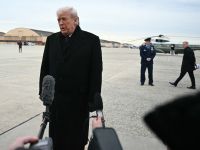ALBAWABA- The U.S. Federal Reserve has published a report on its supervision and regulation of Silicon Valley Bank (S.V.B.), which failed in mid-March and became the largest bank failure since the 2008 financial crisis.
The report, which is highly critical of the Fed, found that S.V.B.'s failure demonstrated "weaknesses in regulation and supervision that must be addressed." It blames Fed overseers for failing to "take forceful enough action" and stated that "regulatory standards for SVB were too low, the supervision of S.V.B. did not work with sufficient force and urgency, and contagion from the firm's failure posed systemic consequences not contemplated by the Federal Reserve's tailoring framework."
Fed plans broad revamp of bank oversight after SVB failure https://t.co/pttjtcN15g pic.twitter.com/FClsXcxi3z
— Reuters (@Reuters) April 28, 2023
The review spanned hundreds of pages and detailed a bank that grew rapidly in size and risk with limited intervention from supervisors who missed obvious problems and moved slowly to address the ones they did recognize. The report suggested changes to bank oversight and regulation, such as stronger deterrents against risk-taking and possible curbs on incentive compensation for executives at poorly managed banks. The report's author, Michael S. Barr, was a major architect of intensified bank regulations in the wake of the 2008 crisis.
S.V.B. had a large share of deposits above the government's $250,000 insurance limit, and its leaders made a big bet on interest rates staying low, which turned out to be a bad one. This left the bank facing big losses and helped bring it to its knees, leading to a rapid failure that spooked depositors at other banks across the country.
The review said it was hard to identify precisely what caused the foot-dragging, but pointed to a culture that focused on consensus and supervisory changes that happened during the Trump administration and under Randal K. Quarles, the Trump-appointed vice chair for supervision in that office from 2017 to October 2021.
The report's immediate considerations included a renewed look at how the Fed carries out oversight for banks of different sizes, including a review of "tailoring" rules enacted during the Trump administration that made oversight less onerous for many small and midsize banks. The report also said that the Fed would re-evaluate a range of rules for banks with $100 billion or more in assets.







